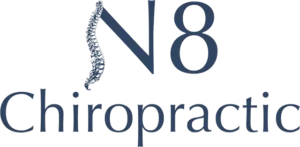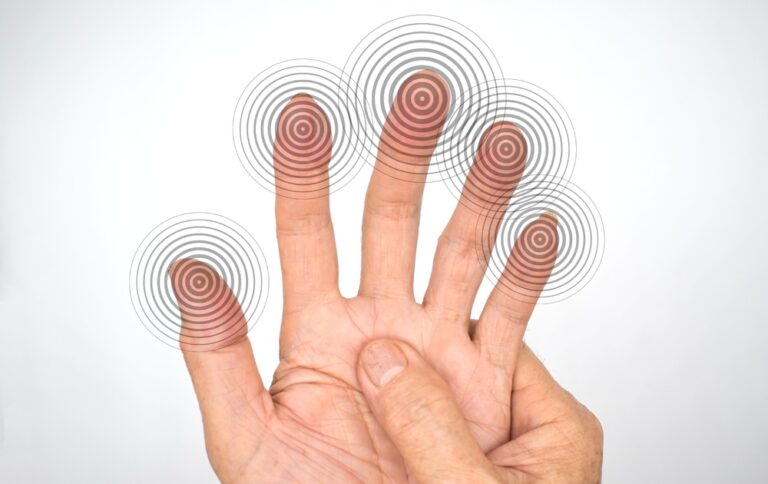Did you know that the way your shoulder blade sits and moves can cause pain in your neck or arm? Many people do not see this connection, but trouble with the shoulder blade, such as scapular dyskinesis, can hurt your upper body health. When the shoulder blade does not function properly, it disrupts the coordination between your neck and arms. This often leads to pain.
Understanding Shoulder Blade Dysfunction
The shoulder blade called the scapula, helps your arm move and keeps your shoulder joint steady. If you injure it or the muscles around it become imbalanced, the shoulder blade can move incorrectly. This problem is known as scapular dyskinesis. You may find it hard to do things over your head, your shoulder may feel weak, or you may have pain that does not go away.
If you do not correct dyskinesis, the shoulder joint may not align properly. It can get worse over time. The good thing is that physical therapy can help you get your shoulder blade working right again. This provides the area with better mobility and can help alleviate pain.
Anatomy of the Shoulder Blade and Surrounding Muscles
To understand scapular dyskinesis, you first need to know how the shoulder blade works in the upper back. This triangular bone is located in your upper back and connects to very important muscles. This includes both the rotator cuff and the scapular muscles. These muscles work together in the body to help keep the shoulder joint steady. They also let your arm move in many different ways, like when you throw something or lift an object.
The shoulder blade joins with the collarbone and the upper arm bone. The way these connect helps every joint work together when you use your arm. The acromioclavicular joint is the one that links your scapula to your clavicle, and it plays a big part in how you move your arm.
To maintain a healthy scapular position when moving, your muscles need to function properly. If you have muscle weakness or if any are too tight, you can run into problems like scapular winging. That can make your movements feel odd or wrong. If you recognize when something feels off in your anatomy, you can prevent these problems from worsening.
How the Shoulder Blade Affects Neck and Arm Movement
The way your shoulder blade moves affects how well your neck and arms work together. If there is an imbalance in the way the shoulder blade moves, you can get problems with moving your upper body. This often leads to discomfort when you perform the same action repeatedly or when you raise your arm overhead. The shoulder blade works like a foundation that helps your arm move smoothly.
When the movement of your shoulder blade, or scapular motion, is blocked, your range of motion goes down. This can strain the surrounding tissues. You may experience stiffness, a pulling sensation, or mechanical neck pain. If your shoulder blade does not move as it should, there is more stress on the soft tissue near your upper arm bone.
Your shoulder blade and the shoulder joint must work together for you to move your arms easily. When you reach overhead or stretch out to the side, your shoulder blade helps you do it. If you fix the movement of your shoulder blade, you can have a better range of motion and reduce neck pain.
Common Causes of Shoulder Blade Dysfunction
Shoulder blade problems often begin due to factors such as muscle imbalance, repetitive movements, or poor posture. These conditions can cause the scapular muscles to become weak or function improperly. That can lead to discomfort and less movement in the shoulder joint.
If you do not take care of these problems, chronic issues can show up. Some of these problems are scapular pain or winging. It is important to find out what is causing the pain, whether it is from doing the same motion too much, nerve issues, or tight muscles. If you receive help early, physical therapy can address these issues. This helps improve shoulder joint movement and maintain proper scapular positioning.
Poor Posture and Repetitive Movements
Your daily habits could be making your shoulder blade problems worse without you knowing it. Bad posture causes the scapula to sit in the wrong position, leading to stiffness or sore muscles. If you sit or slump with rounded shoulders for a long time, it disrupts the way your shoulders align. This change also affects scapular motion.
Repeating the same moves over and over, such as when playing sports like throwing or performing professional tasks like typing, puts extra pressure on the affected shoulder. Over time, repetitive motions like these can weaken the muscles surrounding it. This makes it more difficult to improve later on.
A physical therapist can help determine how your posture and repetitive movement cause problems. For relief:
- Stay mindful to keep your back straight and maintain an upright posture each day.
- Be cautious not to overexert the scapular muscles during strenuous activities.
- See a professional if pain or tightness persists in your shoulder area for an extended period.
When you take steps to fix these habits, your shoulder health can get much better.
Muscle Imbalances and Weakness
Muscle imbalances are often the primary cause of scapular dyskinesis. They can affect how your shoulder works. When main muscles like the rotator cuff or levator scapulae are weak, it throws off smooth scapular motion. Tight muscles that are not used enough can put your shoulder in the wrong position. This often leads to pain or discomfort.
Doing the right physical therapy exercises and working on these weak areas can help. When you balance out these muscles, it can make scapular motion smoother and reduce pain. Physical therapy also helps improve overall shoulder health.
Recognizing the Signs—Neck and Arm Pain
Do you have neck pain that will not go away? Does your arm sometimes feel heavy or “dead”? These are symptoms of scapular dyskinesis. When your shoulders are not lined up right, and your scapular muscles do not work well, it can make your neck and arms hurt.
If you spot these symptoms of scapular dyskinesis early, you can stop long-lasting pain or even soreness in the future. You do not have to let scapular dyskinesis take over your life. You can do things to help, like going to N8 Family Chiropractic. This will help you move better and be free of pain.
Symptoms That Point to Shoulder Blade Issues
Are your shoulder blade issues going unseen? The symptoms of scapular dyskinesis can change from person to person, but they often look the same. Here are some things to look out for:
- There is a clear “winging” of the shoulder blade when you raise your arm.
- You feel pain from the inside edge of the shoulder blade.
- You have a hard time moving your arm, like raising it above shoulder level.
- There is tiredness or weakness when you repeat certain actions.
- You notice odd snapping or popping noises when you move your arm.
These symptoms of scapular dyskinesis mean your scapular positioning or scapular motion could be off. Getting help from physical therapy can ease pain and help bring your shoulder blade back to moving and working the right way.
How Pain Travels from the Shoulder Blade to the Neck or Arm
Pain in your shoulder blade often spreads out. It rarely stays in one spot. Scapular problems can hurt soft tissues and nerves. This can make you feel pain in your neck or your arm. Sometimes, things like mechanical neck pain or tingling in the arm are caused by nerve damage near the affected shoulder blade.
When the scapula moves out of place, it can stress muscles close by and cause pain. This type of pain can move to many areas and make shoulder movement hard. When you fix the root causes, you can stop the pain from spreading.
Manual therapy and special exercises can help here. These treatments focus on giving targeted relief and helping the shoulder blade work the way it should.
Final Thoughts
Trouble with the shoulder blade is not just a small problem. It can have a big effect on your neck and arm health. When you learn how your shoulder blade connects to other parts like your neck and arms, you can spot more of the signs that something could be wrong. It is essential to address issues such as poor posture, weak muscles, and repetitive movements. These things help keep your whole body in good shape. If you notice pain in your neck or arms that might be because of your shoulder blade, get help right away. Visit N8 Family Chiropractic to find the treatment that best suits your needs. This can help you feel better and get back to your normal life.




